MorainesThis collection of photos illustrates the characteristics of the contemporary and Little Ice Age moraines of Khumbu Glacier, plus a bit of “human interest”. Our work involved mapping of these features using a combination of satellite imagery, aerial photography and ground observations. |
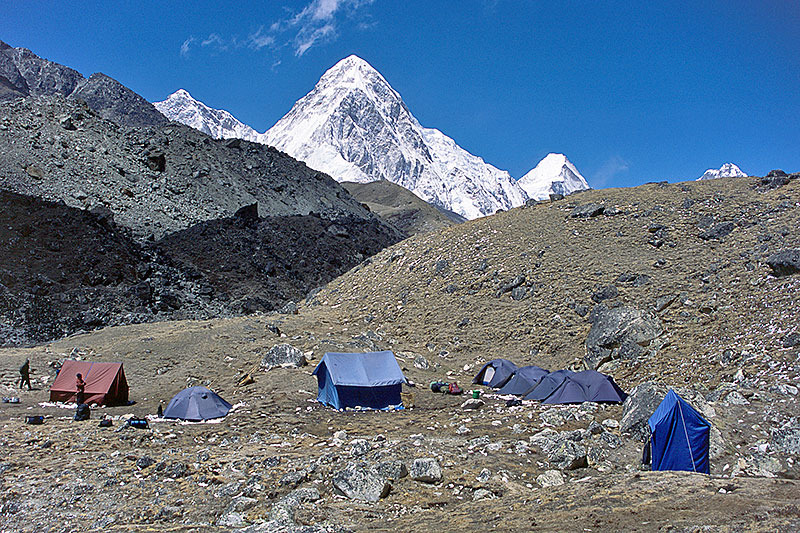 Our camp for investigations of the glacial geology in 2003 was located on the valley-side flank of the Little Ice Age lateral moraine, with Pumori dominating the scene. | 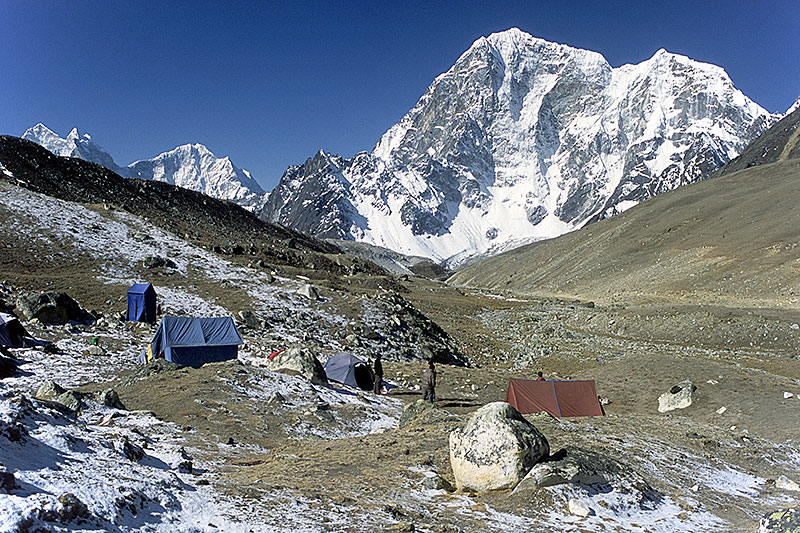 Another view of our camp looking in the opposite direction (south). The moraine is on the left and the glacier lies beyond. | 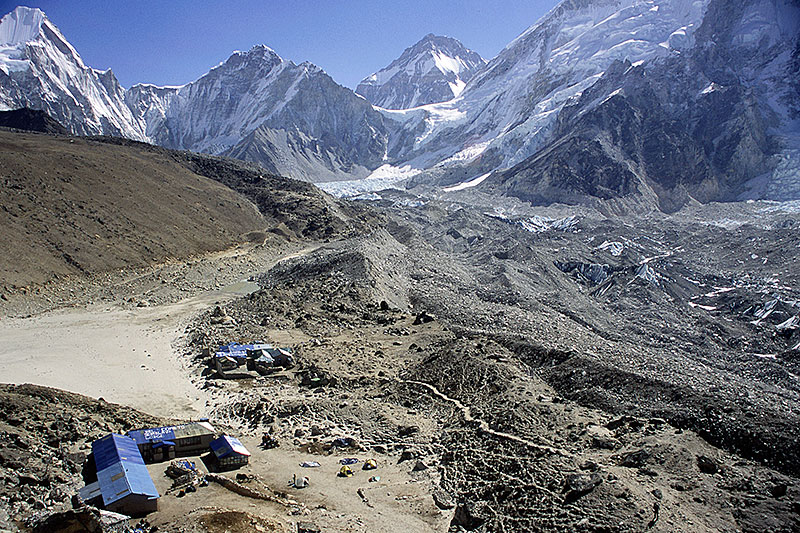 Gorak Shep, where lodging for trekkers is provided, lies in an old lake basin enclosed by lateral moraines. The route to Everest base camp follows the glacier surface from this point onwards. | 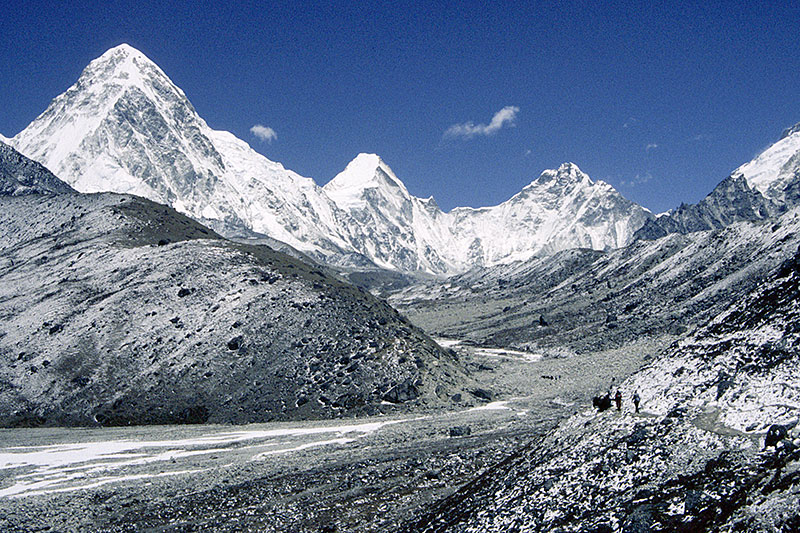 This lateral morainic trough is the small valley between the mountain wall and the Little Ice Age moraine. The path to Base Camp and Kalar Pattar follows this valley. |
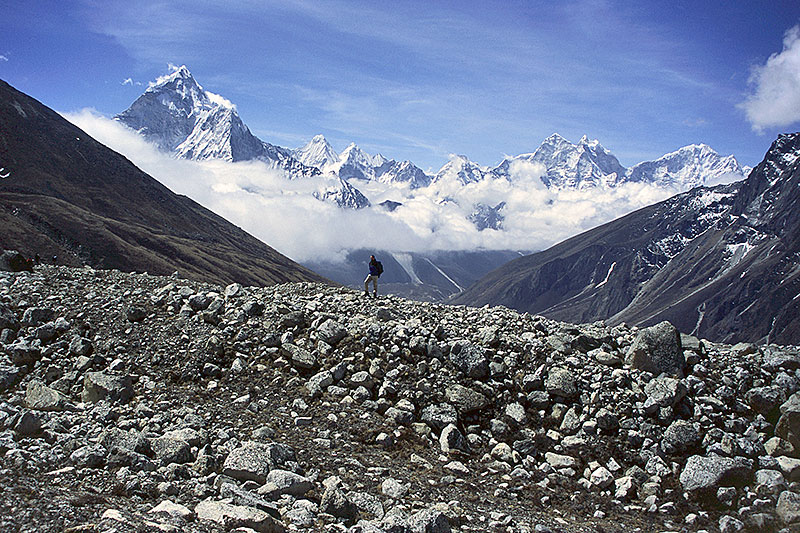 View from the end moraine of Khumbu Glacier, looking towards Ama Dablam. The moraine is probably ice-cored, but already scanty vegetation is becoming established. | 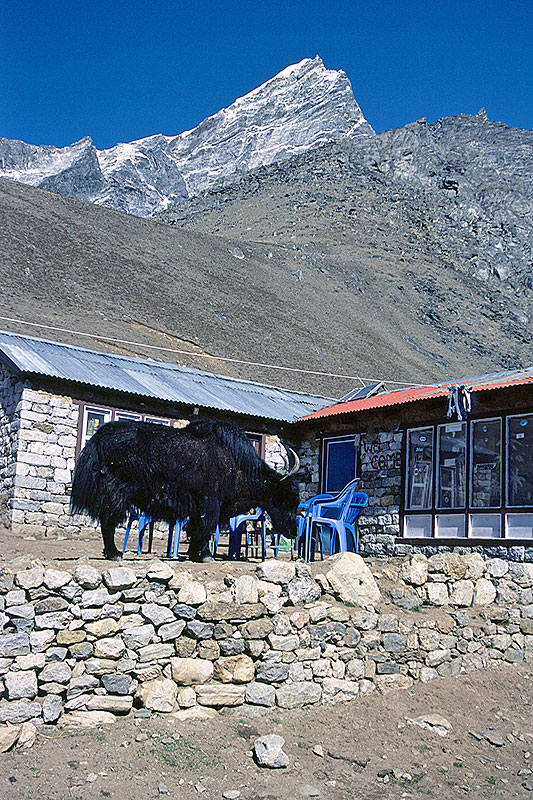 A black yak at the lodgings at Lobouche en route to Base Camp. Yaks are the “beasts of burden” for most groups taking this route. | 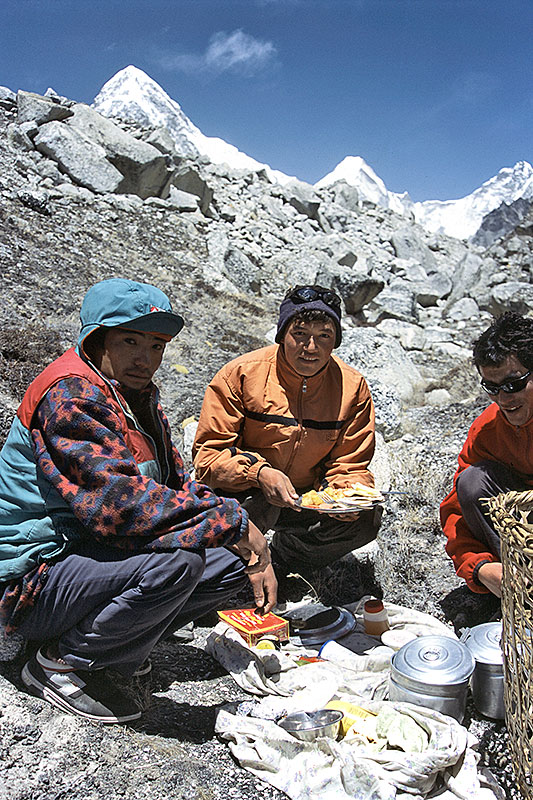 Wonderful support from our Sherpa guides: cooked lunch carried across the rough boulder surface of Khumbu Glacier. | 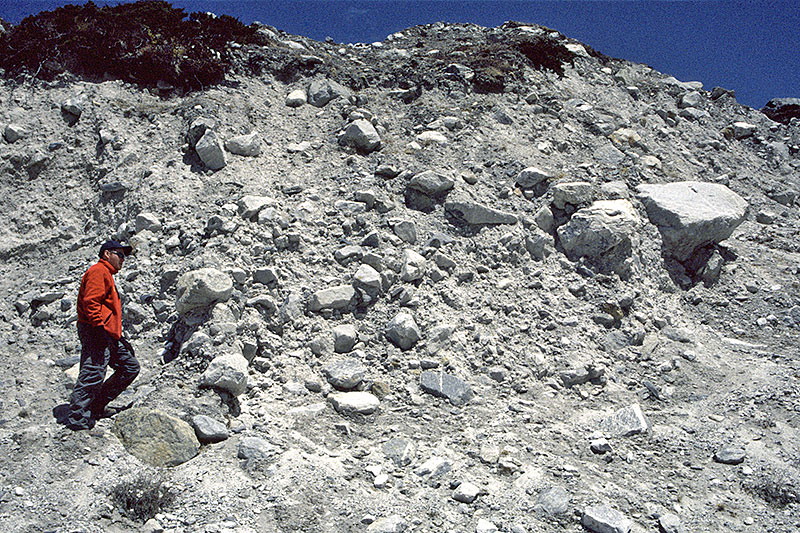 The terminal moraine’s outer face in places has exposures of the sandy boulder-gravel material that characterizes the depositional landforms in this region. |
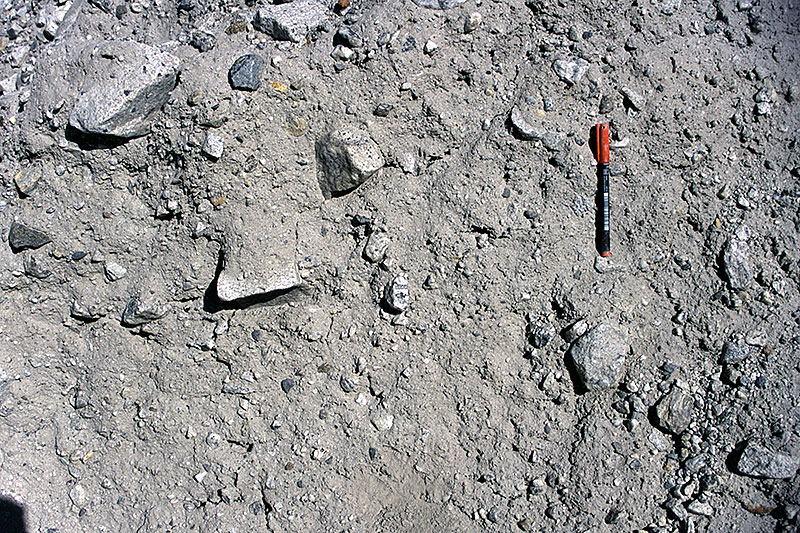 Close-up photo of lateral moraine debris at Kalar Pattar, illustrating the poorly sorted nature of the deposit. | 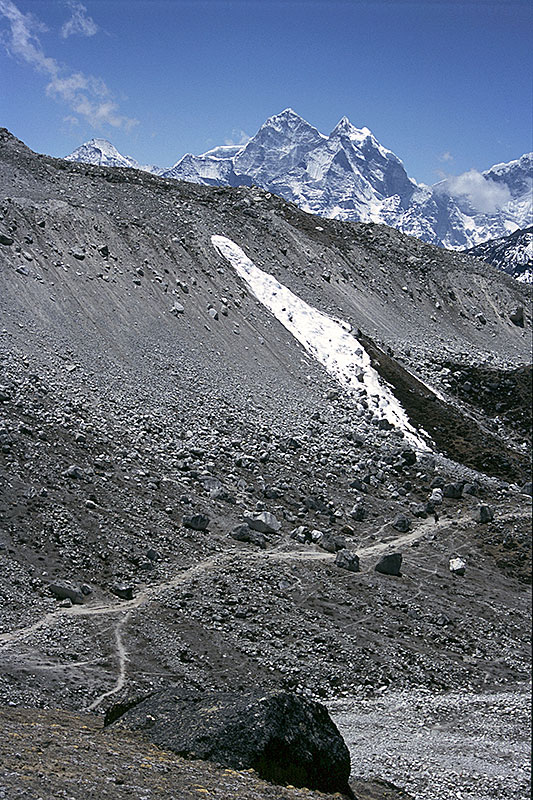 A seepage zone in the right (west) lateral moraine, where supraglacial meltwater migrates through the sandy gravel material and, on this occasion, refreezes. | 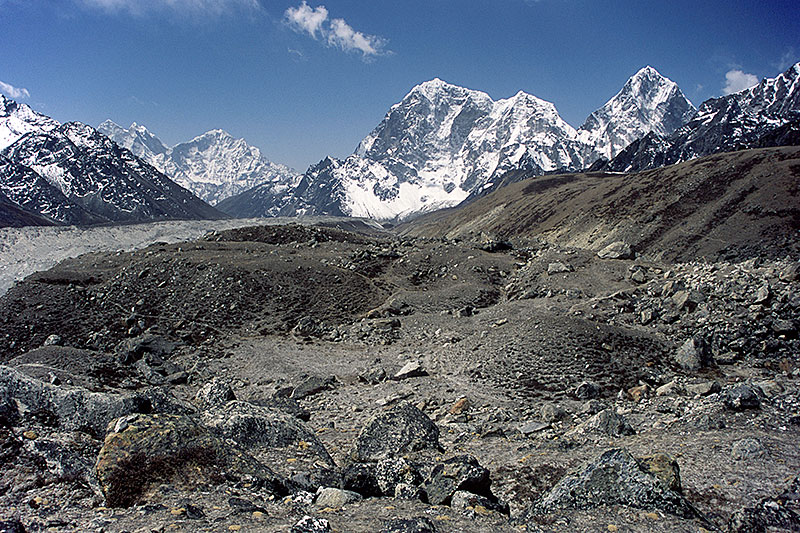 A zone of hummocky (ice-stagnation) moraine belonging to the Little Ice Age near the confluence with Shangri Shar Glacier. | 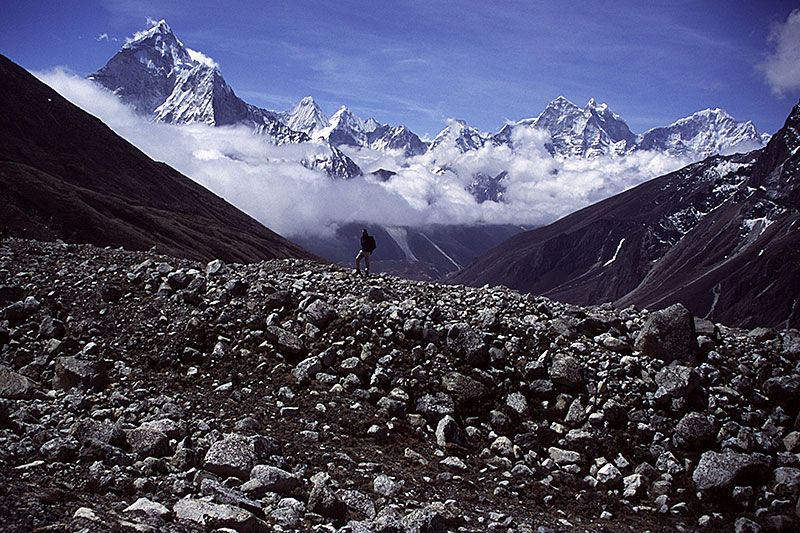 Concentration of subrounded and subangular boulders in the end moraine, illustrating a basal glacial source for this material. |
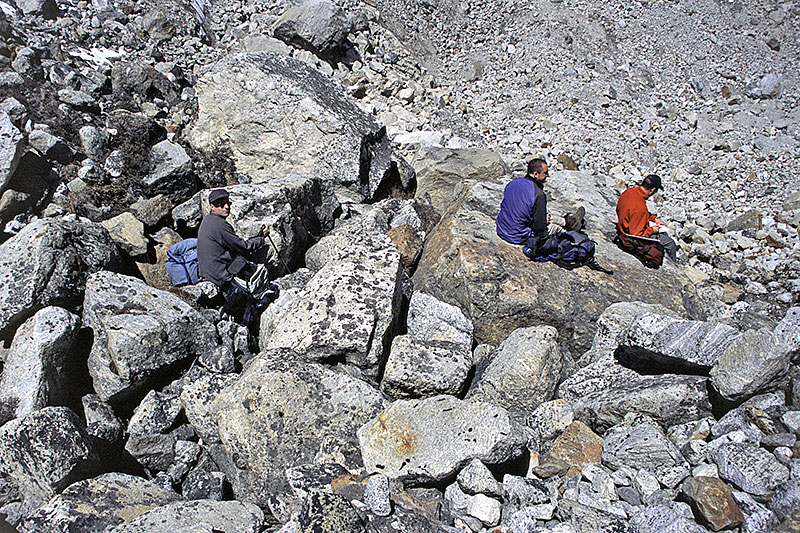 Large angular blocks form the end moraine of the now severed side glacier above Lobouche. | 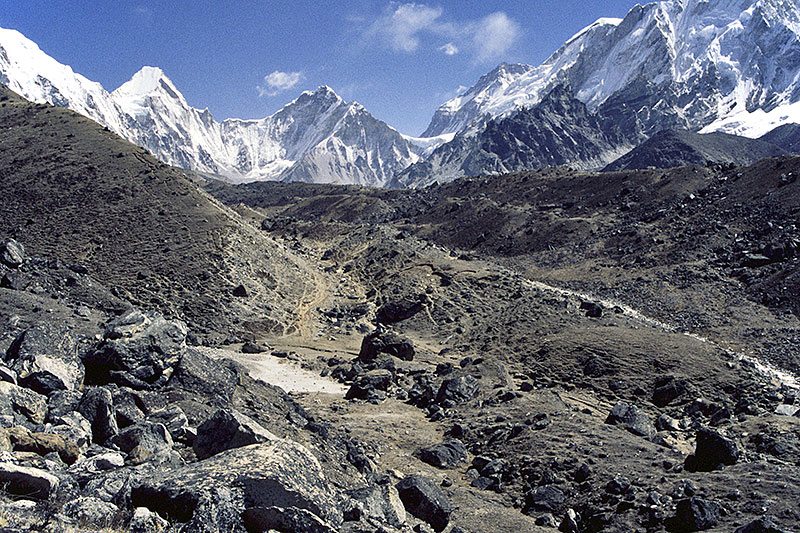 Near the snout there are multiple ridges of moraine dating from the Little Ice Age. View up valley. | 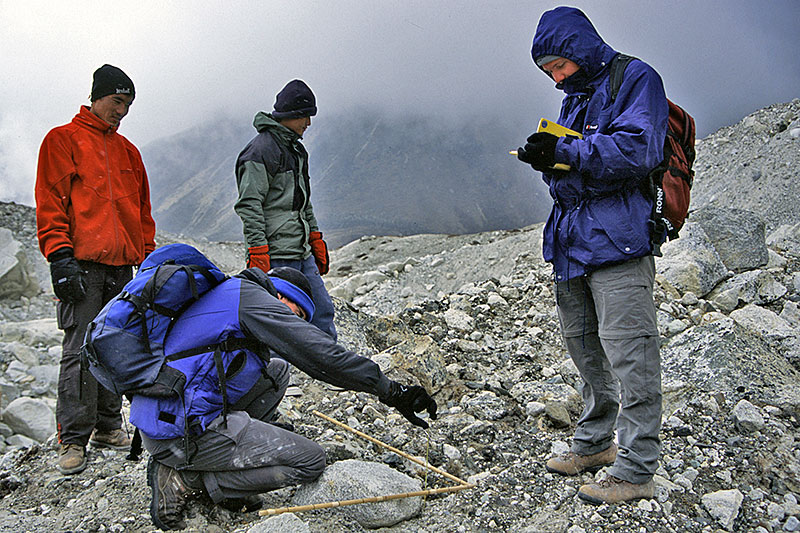 Detailed examination of the moraine sedimentary facies included evaluation of particle size, and clast shape – a chilly job under cloudy skies. | 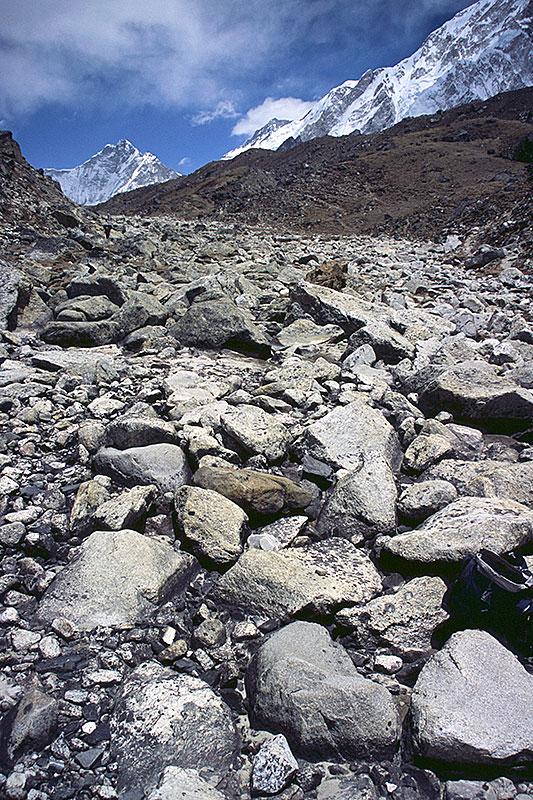 The dry stream bed in the floor of the lateral morainic trough, showing partial rounding of boulders. During our visit no water occupied this water course. |
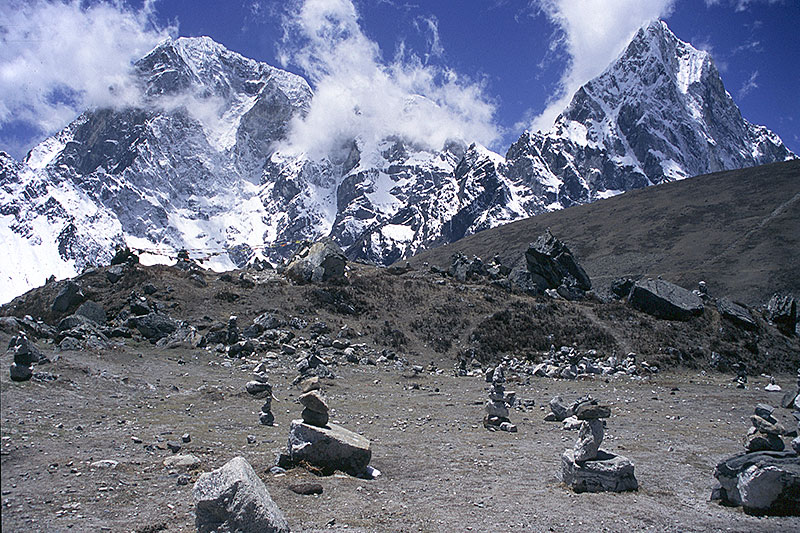 Memorials to climbers and Sherpas who have lost their lives on Mt Everest cover the moraines near the snout of the glacier. | 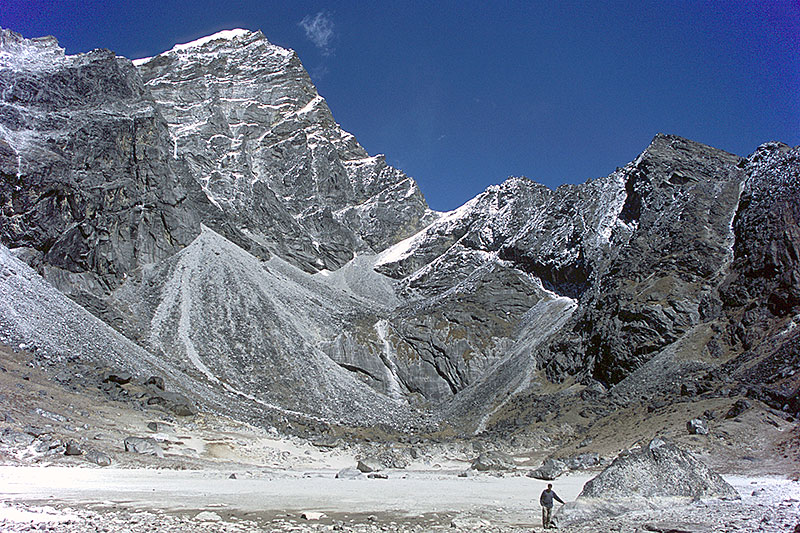 A side valley near the snout of the glacier (west side) bears evidence of a dry lake bed, late Pleistocene moraines and modern rockfall processes. | 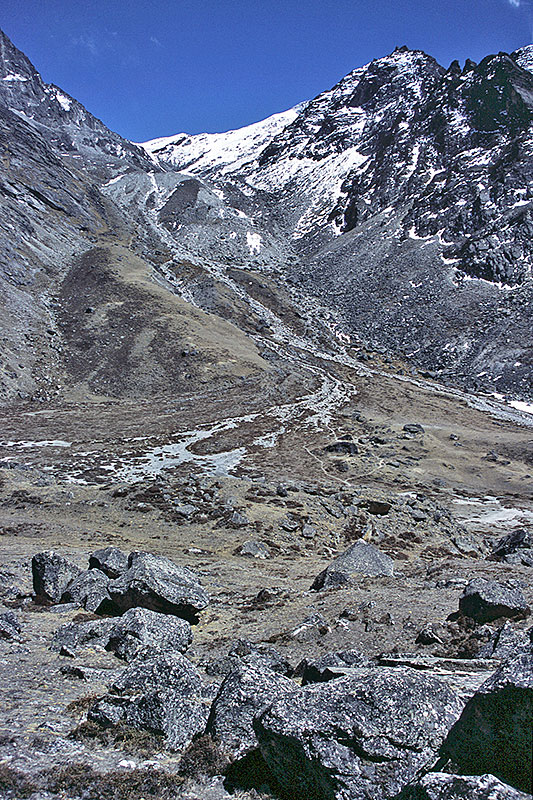 A receding rock glacier, formerly a moraine-producing side glacier, lies outside the eastern lateral moraine of Khumbu Glacier. | 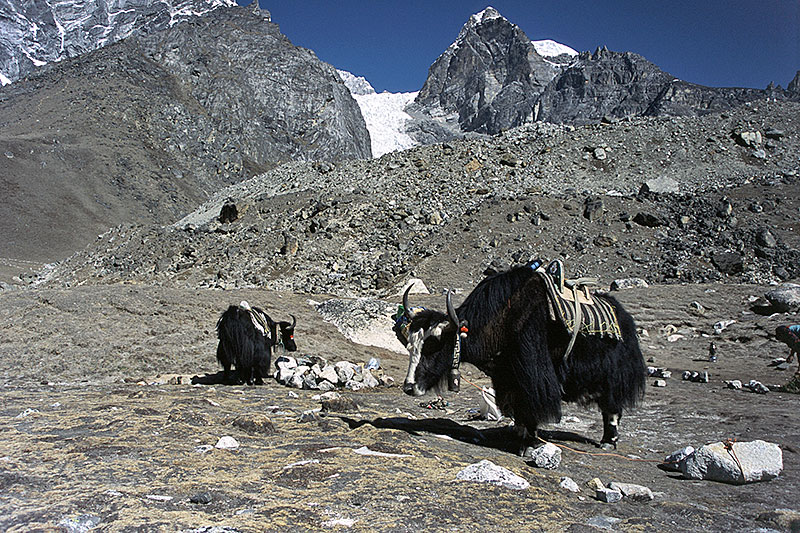 After completion of fieldwork at Khumbu Glacier, yaks are loaded to carry our equipment to the next site. |
| Photos Michael Hambrey, April-May, 2003 |